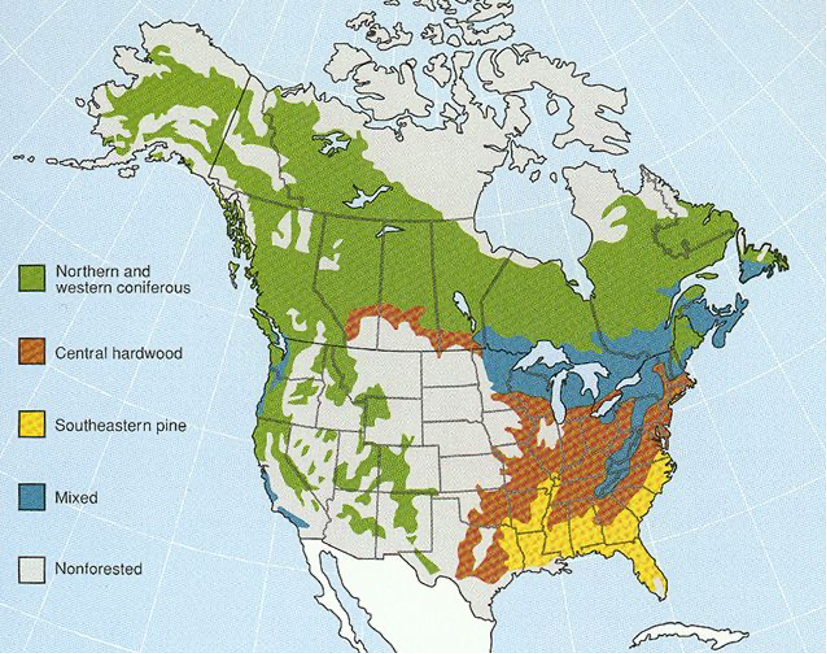A recent Twitter post by EcoWatch stated that “A new study has found an alarming loss in forest areas.” That led me to an EcoWatch article, “Global Forest Area Declined by 60% Since 1960, Study Finds.” The study is in Environmental Research Letters.
Sixty percent—that’s certainly a startling statistic. The study’s authors show that most the forest loss has occurred in tropical forests in South America, Africa, and Southeast Asia.

After decades of clearing for agriculture, forests in the Eastern half of the US have rebounded. Image: US Forest Service.
According to EcoWatch, “While illegal logging plays a part in forest loss, the No. 1 cause of deforestation is agriculture, as more and more land is razed for growing crops or raising livestock. More monitoring, preservation, and reforestation globally is necessary to maintain forested land and prevent major biodiversity loss.”
The good news is that forest loss is not occurring in the Canada and the US. The researchers analyzed data from the United Nations’ Forest and Agriculture Organization (FAO), which shows that the total area of forest in Canada remained steady between 1990 and 2020, with a decline of just 0.24 percent. In the US, the area of forest increased between 1990 and 2020 by nearly 5 percent. In light of population increases, the expansion of cities and towns, other land-use changes—not to mention timber harvesting—this is remarkable.
Agriculture was at the root of the loss of a great deal of forest in the Eastern half of the US. Clearing of forest land in the North and East between 1850 and 1900 averaged 13 square miles every day for 50 years, according to the US Forest Service, and large areas of the South also were converted from forest to agriculture. Many of those agricultural fields have since been reforested, and that trend continues.
What’s more, US forests are very productive. Each year, the growth of timber in our forests is nearly twice the volume harvested. (I couldn’t find such data for Canada.)

Forests of Canada and the US. Source: Michigan State University.
So, the message is that we’re not losing forests in the US and Canada. We’re retaining what we have and, in the US, establishing more forest. And in the US we’re growing more than we harvest. That’s compelling evidence of sustainability.
Here’s more information:
- According to Natural Resources Canada: The nearly 362 million hectares (ha) of forest covers about 40 percent of the nation’s land area. Canada has 9 percent of the world’s forests.
- According to the US Forest Service: The 304 million hectares of forest land covers about 34 percent of the nation’s land area. The US has about 8 percent of the world’s forests.
- Only two nations have more forest: Russia, with 815 million hectares, and Brazil, with 492 million hectares.
Pop quiz: Several nations have no forest at all (Greenland, Qatar, and others). Poor them! Which nation has the highest percentage of forest, at 97.4 percent, according to the World Bank? No Googling!
